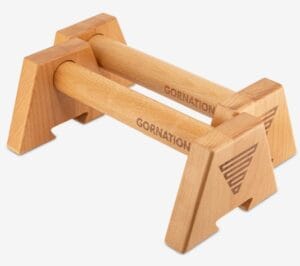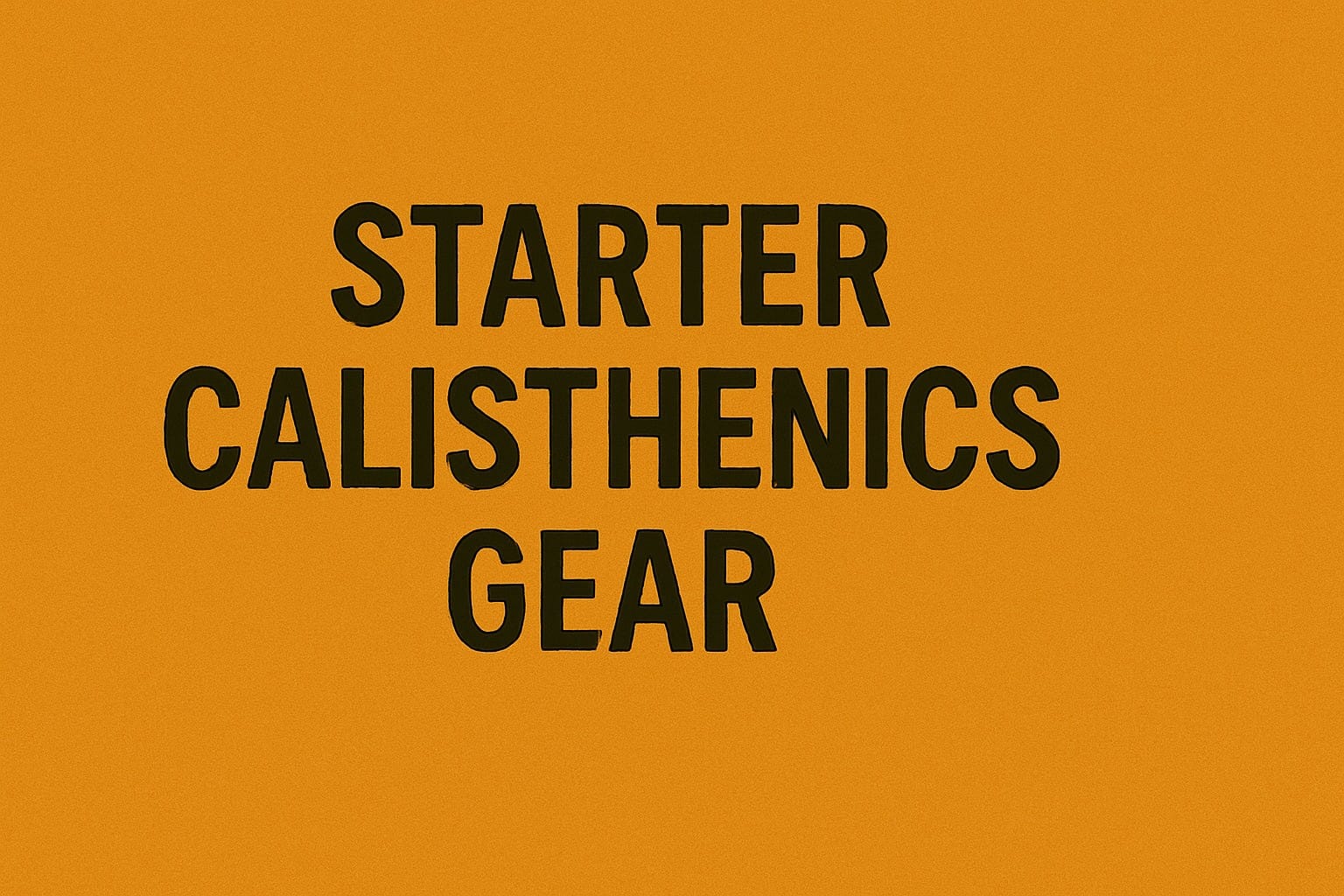Wooden parallettes are a classic choice in calisthenics. They offer a natural grip, feel solid under your hands, and stay comfortable even during longer sessions. Whether you’re training L-sits, push-ups, planche progressions, or handstands, a well-made pair of wooden parallettes can help at every level.
I’ve tested quite a few over the years, and below you’ll find the pair I personally use and recommend. If you’re not sure about the type of parallettes you want, then you can check out my more generic blogpost at best parallettes for calisthenics.
Table of Contents
Top pick: Gornation wooden parallettes

The Gornation wooden parallettes are my current go-to. They have a smooth birchwood handle with a grippy, natural feel that works well for both static holds and dynamic exercises. The base is stable and reliable, and they perform well on a variety of surfaces.
I’ve used these for everything from handstands to push-up progressions, and they’ve held up really well.
What to look for in wooden parallettes
Handle thickness
A comfortable diameter (usually around 40 mm) gives you better control during holds and transitions.
Wood quality
Hardwoods like birch or beech are durable and naturally grippy. A smooth but not overly polished finish is ideal.
Base stability
A solid and wide base keeps the parallettes from tipping or wobbling, especially on balance exercises.
Height
Choose low or high parallettes based on your goals. Lower is great for push-ups and L-sits, higher is better for dips and handstand push-ups.
Where you train
If you mostly train indoors, wood works perfectly. For outdoor or all-weather use, metal might be more durable.
Wood vs metal: which one is better?
Wooden parallettes offer great grip and comfort, especially during longer workouts. They don’t get cold like metal and tend to feel better on the hands, especially during static holds.
That said, metal parallettes are often more durable, better suited for outdoor training, and usually a bit heavier, which can add extra stability. If you want something that can take a beating in any condition, metal might be the better fit.
In short, it’s not about which is better overall, but which suits your training style and environment best.
Why wooden parallettes are still a great option
• Natural grip that stays comfortable
• Warm feel that doesn’t change with temperature
• Excellent for wrist-friendly positions
• Great balance of performance and value
• Suitable for beginners and advanced athletes alike
Frequently asked questions
Are wooden parallettes better than metal ones?
Not necessarily. It depends on your training needs. Wood feels better for long sessions, while metal might be better for rough or outdoor use.
Can I use wooden parallettes outside?
Yes, but it’s best to avoid wet or muddy conditions. Keep them stored in a dry place to extend their lifespan.
How do I clean and maintain wooden parallettes?
Wipe them down after training, store them dry, and if needed, lightly sand and reseal them over time.
Are wooden parallettes beginner-friendly?
Definitely. The grip, comfort, and stability make them a great option for anyone starting calisthenics.




